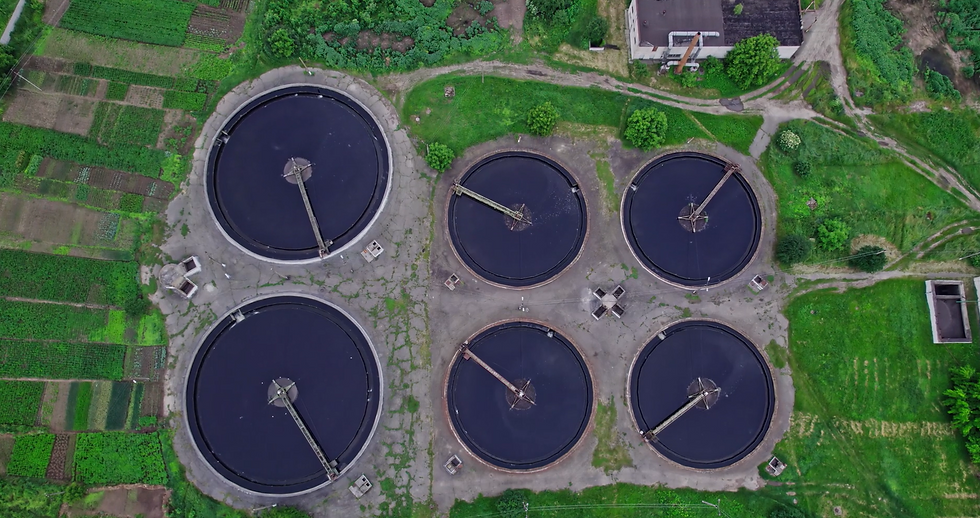Why the history of a rock matters
- Anna Reid

- Dec 9, 2024
- 6 min read
Updated: Apr 9
We've all got history. Some of that history informs how we view the world, what we do and how we do it. It turns out rocks are no different. Understanding their history can help us think about their potential as a tool for climate change mitigation.
Rocks are carbon sinks, natural reservoirs that absorb and store carbon dioxide (CO2) over geological timeframes. This natural process is what has inspired enhanced rock weathering (ERW) to help remove CO2 from the atmosphere. It’s an exciting prospect and seemingly simple solution; take rocks, grind them up, spread them out and let chemistry do its work.
As well as removing carbon, ERW can improve soil health and ocean alkalinity, adding to the allure of this natured-inspired solution.
But as we rush to find solutions to reduce atmospheric CO2, it’s important to look back in time. Because the history of a rock matters when it comes to sustainable futures.

The awesome Nisleheim Peak of the Valhalla Range in British Columbia Canada. Mountains like these composed of metamorphic rocks are part of Earth's carbon cycle, absorbing and storing carbon dioxide over geological timeframes. Image: Edward Williams, Aspiring Materials.
How enhanced rock weathering works
In nature, rocks slowly react with CO2 in the atmosphere. Over long time periods, rocks are weathered by the elements, buffeted by winds, eroded by rivers and rain or dissolved by exposure to acids and salts. This weathering exposes minerals that react with carbon dioxide to form compounds like bicarbonate, or mineralise as stable carbonates, effectively removing CO2 from the atmosphere.
Enhanced rock weathering accelerates this process, short cutting the weather’s role with engineering processes that grind up the rock into a fine dust that exposes those CO2 hungry minerals. The rock dust can be spread onto soils, beaches or scattered over the ocean to soak up CO2 from the atmosphere or in the seawater.

Calm waters of Parua Bay in Northland Aotearoa New Zealand. Enhanced rock weathering leverages the ocean's carbon cycle by increasing alkalinity which improves the absorption and long-term storage of carbon dioxide as bicarbonates. Image: Anna Reid, Aspiring Materials.
There are three main types of materials used for enhanced rock weathering projects:
· Basalts
· Cement waste
· Olivine & serpentine-rich ultramafic rocks
These materials are abundant, can be found all over the world and importantly each contain minerals rich in magnesium and calcium that influence alkalinity and capture CO2.
But that is not all they contain.
Bringing the past into the present
Enhanced rock weathering is a technology based on chemistry. While the chemistry demonstrates that some rocks will transform CO2 when water and time are added, we must be mindful of what else we may introduce into the environment.
Solving the excess CO2 problem should not create new environmental issues.
Rocks have history, in fact they carry with them the history of this planet. How a rock is formed dictates its composition and ultimately what it will bring with it into the present. When we break it apart and spread it onto the soil that grows our food, or the beaches our kids play on, we need to have a sound understanding of the rock’s past.
A closer look at the options
Take basalt for example. Widely regarded as a suitable material for enhanced rock weathering, basalts rocks are volcanic, formed when lava cools rapidly. These rocks are made up of minerals like calcium, potassium, aluminium and more importantly (in this context), magnesium and silica.
The magnesium or calcium in basalt rock is a great candidate for capturing carbon – when exposed and dissolved in water it will either help CO2 form a bicarbonate or potentially mineralising to lock in CO2 as a stable carbonate.

When lava cools rapidly, it forms basalt but also traps volcanic gases which contain CO2. Image: Jelle de Gier, Unsplash.
But basalt also contains carbon dioxide. When the rapidly cooling lava that formed a basalt, it also trapped volcanic gases, creating small bubbles in the rock. When ground down to be spread on soils, that trapped CO2 in basalt is released.
If the basalt was formed in the ocean, it may also contain carbonates. When that basalt is ground down into rock dust it can add another point where CO2 could to be re-released into the environment.
The amount of CO2 released from basalts varies, but regardless, when basalt is used to remove carbon, it’s releasing it too.
Cement waste is another readily available material that can be used to remove CO2 from the atmosphere.

To reduce both waste and virgin materials, recycling cement is an important part of the circular economy. Image: WIX media.
Recycling cement waste is an important part of the circular economy, concrete production contributes about 8% of the global annual CO2 emissions. The source of these emissions stem from the production process (it needs a lot of heat, best made by fossil fuels) and the materials used (limestone and clinker which both release CO2 when heated).
When used for enhanced rock weathering, the calcium oxide present in cement waste does a good job at increasing alkalinity and mineralising CO2 and locking it away as a carbonate. But the baggage it brings with it in CO2 emissions from its original production can negate the CO2 it removes when ground up and spread on soils or over oceans.
Not only does cement waste have legacy CO2, it also often has heavy metals, like lead, cadmium, chromium, cobalt or nickel. While levels of these heavy metals may fall within acceptable WHO standards, over time build-up in soils or water ways can result in detrimental long-term environmental and health outcomes.
Then there’s olivine and serpentine-rich ultramafic rocks which, geologically-speaking, mineralise CO2 more rapidly than other rock types. It’s still very slow though when we consider how rapidly we need to remove gigatonnes of CO2 in the coming decades.
These rocks are generally carbon-free, having been formed deep in Earth’s mantle. Contained within these ultramafic rocks are magnesium-rich minerals which will aid in mineralising CO2 when mixed with water.
Spreading finely ground dust from olivine or serpentine-rich ultramafic rocks onto soils or over oceans exposes those minerals but it also exposes whatever else the rock contains – and that can include cobalt, nickel or even asbestos.
The mineral composition of ultramafic rocks varies too, it’s not all magnesium and calcium, there is quite a lot of silica too. That variability means a lot of this rock dust is required to make a meaningful difference to atmospheric CO2. The more added, the greater the risk of heavy metals entering the environment.
The present holds future promise
Enhanced rock weathering does have potential for large scale carbon removal, but we need to consider more than the chemical reactions. We must consider the past we might be unwittingly unearthing.
One promising solution is found in the history of olivine-rich ultramafic rocks. The composition of these carbon-free rocks may contain heavy metals like nickel and cobalt, but as stated above, they also contain magnesium, iron and silica. These are all valuable elements in the built environment, even more so if we can extract them without releasing CO2.
Knowing this rock’s past means we can think purposefully about how to unpick its history. Using controlled separation, these individual elements become high quality, high purity materials that can be targeted for useful applications.
In terms of magnesium, one of those applications is carbon removal. Under controlled extraction, magnesium hydroxide can be derived from these ultramafic rocks and that carbon-free chemical compound rapidly mineralises CO2 to form a stable carbonate.

Magnesium hydroxide or milk of magnesia sourced from ultramafic rocks is an alkaline material that mineralises carbon dioxide rapidly. Image: Elife Halliday, Aspiring Materials.
Magnesium hydroxide is greedy too, soaking up two-thirds of its own weight in carbon dioxide making it an efficient tool for carbon removal in a number of ways.
Magnesium hydroxide extracted from olivine-rich ultramafic rocks results in a high quality, high purity material that is safe, efficient and effective at mineralising CO2. Plus, it adds alkalinity to soils and seawater that provides environmental benefits, which makes it a safer, sustainable solution for enhanced rock weathering.
Walking backwards into our future
Like so many engineered solutions for climate change mitigation, enhanced rock weathering is an exciting new frontier that is still in its infancy.
But as the science continues to evolve, we must remember to learn from the past. Understanding the history of rocks can help us build a sustainable, low-carbon future.
Aspiring Materials has developed a chemical process to separate and extract magnesium, iron, silica and heavy metals from olivine-rich ultramafic rocks for industrial applications.
Our magnesium hydroxide is proven to capture CO2 rapidly and can be used in a variety of carbon removal applications. Read the published scientific study that assess the effectiveness of common types of rocks and minerals used in enhanced rock weathering.




Comments